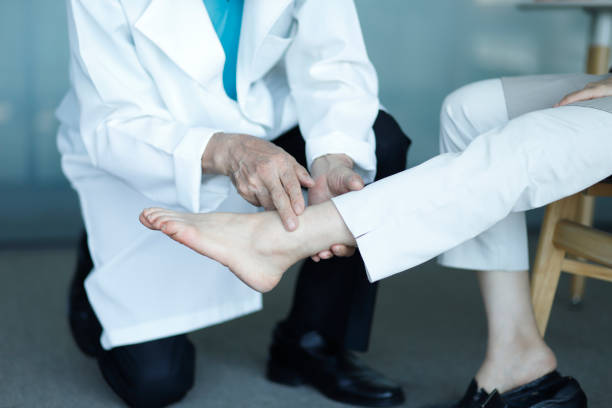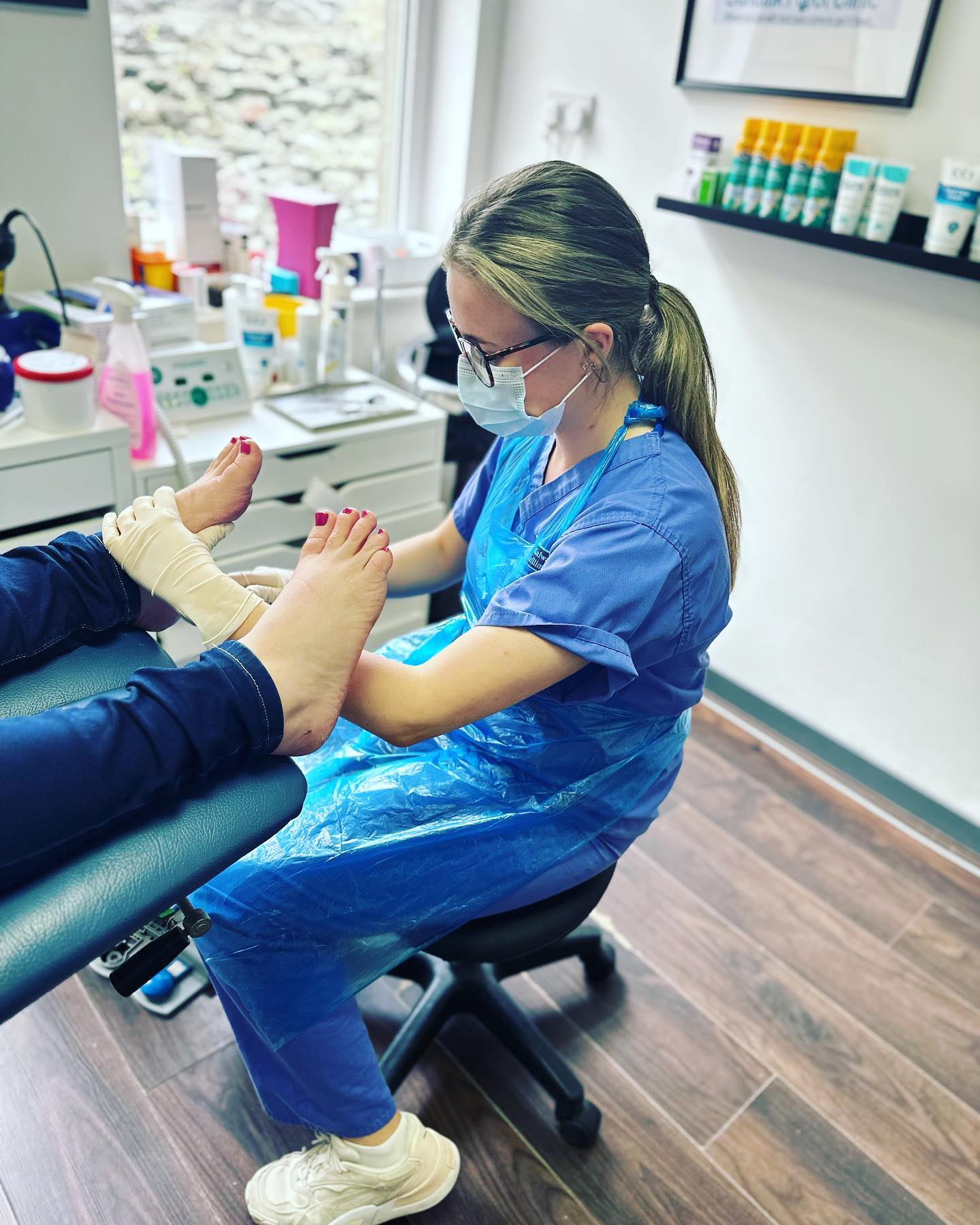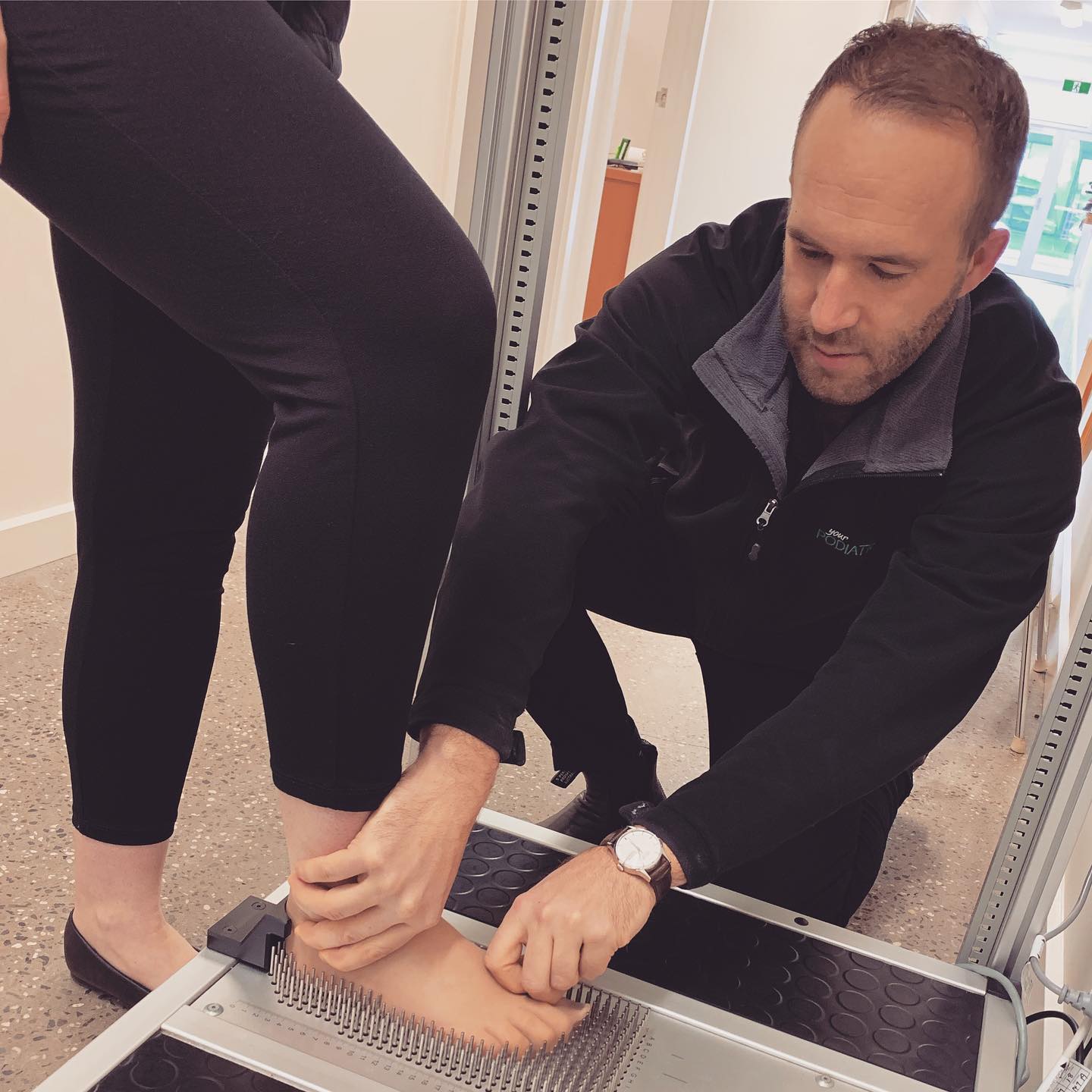Managing Ankle Pain: Effective Physical Therapy Techniques
Ankle pain can be a significant hurdle in our path to an active and fulfilling life. Whether it’s the result of a sports injury or a chronic condition such as arthritis, the discomfort and immobility that ankle pain brings are not to be underestimated. Physical therapy offers a path to managing and even preventing this pain, providing a roadmap for recovery that focuses on strengthening, flexibility, and overall ankle health. In this comprehensive guide, we’ll explore the various physical therapy techniques that can aid you in your quest for pain-free mobility.
Understanding Ankle Pain
Ankle pain can stem from a variety of causes, each contributing to discomfort and impediment in different ways. Among the most common origins of ankle pain are injuries such as sprains—which occur when the ligaments that support the ankle stretch beyond their limits and tear—and fractures, which involve breaks in the ankle bones themselves. Chronic conditions, such as arthritis, can also lead to ongoing ankle pain. Arthritis notably affects the joint, causing inflammation that can severely restrict movement and cause persistent pain.
Recognizing the signs and symptoms of ankle issues early on is crucial for effective treatment and prevention of further injury. Common indicators of ankle problems include not only pain but also swelling, stiffness, redness, and an inability to bear weight on the affected ankle. Additionally, a decrease in the range of motion can signify that something is amiss. Identifying these symptoms promptly and seeking professional advice can lead to a quicker recovery and less time spent dealing with the discomfort and limitations of ankle pain.
Benefits of Physical Therapy for Ankle Pain
Physical therapy stands out as a fundamental approach in managing ankle pain, offering several crucial benefits aimed at enhancing recovery and preventing future injuries. A key advantage is the personalized care plan that physical therapists can devise, tailored specifically to the individual’s condition and recovery goals. This customized approach ensures that treatment is effectively aligned with the patient’s specific needs, maximizing the chances of a successful outcome.

Ankle Pain
Another significant benefit is the focus on reducing pain and inflammation through various therapeutic techniques, such as ice therapy, massage, and ultrasound. These methods not only alleviate immediate discomfort but also aid in the longer-term healing process by stimulating blood flow to the affected area.
Strengthening exercises form the core of physical therapy for ankle pain, aimed at rebuilding the strength of the muscles surrounding the ankle. This increased muscle support can substantially reduce the risk of future injuries by providing better stabilization for the ankle joint. Similarly, flexibility and balance exercises enhance the range of motion and contribute to a more stable and functional ankle, further mitigating the risk of re-injury.
In addition to direct treatment benefits, physical therapy also imparts valuable knowledge and skills for pain management and injury prevention. Patients learn proper techniques for activities that may have contributed to their pain, such as running or jumping, and receive advice on ergonomic and lifestyle adjustments to support their recovery and health.
Overall, the benefits of physical therapy for ankle pain are comprehensive, addressing not just the symptoms but the underlying causes, equipping patients with the tools they need for a return to pain-free movement and an active lifestyle.
Effective Physical Therapy Techniques
Effective physical therapy for ankle pain incorporates a variety of techniques designed to restore functionality, improve mobility, and alleviate pain. Each technique plays a crucial role in the rehabilitation process, ensuring a holistic approach to recovery. Here are some of the most effective physical therapy techniques for managing ankle pain:
- Therapeutic Exercises: One of the cornerstones of ankle rehabilitation is the use of specific exercises to strengthen the muscles around the ankle joint, improving stability and support. These exercises also aim to enhance flexibility, balance, and coordination, crucial aspects of preventing future injuries.
- Manual Therapy: This technique involves hands-on manipulation and movement of the ankle joint and surrounding tissues by a physical therapist. Manual therapy helps to increase range of motion, reduce stiffness, and promote healing by improving blood circulation to the affected area.
- Gait and Balance Training: For those experiencing difficulty walking or balancing due to ankle pain, this technique focuses on improving the way they walk (gait) and enhancing balance. Gait and balance training can prevent falls and further injury, promoting confidence in movement.
- Modalities: Physical therapists may use various modalities to help manage pain and inflammation, including ice therapy, heat therapy, electrical stimulation, and ultrasound. These methods can accelerate the healing process and provide relief from discomfort.
- Education and Prevention: Educating patients about their condition and how to prevent future injuries is an integral part of physical therapy. This may include advice on footwear, lifestyle modifications, and ergonomic changes to minimize stress on the ankle.
- Aquatic Therapy: For some patients, exercises performed in water can be highly beneficial. The buoyancy of water reduces stress on the ankle joint while providing resistance, allowing for strength and flexibility improvements in a low-impact environment.
By employing a combination of these effective physical therapy techniques, individuals suffering from ankle pain can work towards achieving a successful recovery, ultimately leading to an improved quality of life and a return to active, pain-free movement.
Tips for Managing Ankle Pain at Home
While professional guidance is crucial for recovery, there are also several strategies you can employ at home to manage ankle pain effectively. These tips aim to complement your physical therapy regimen, offering added relief and supporting the healing process:
- Rest: Give your ankle the necessary time to heal by avoiding activities that exacerbate the pain. This doesn’t mean complete immobility but minimizing movements that put undue stress on your ankle.
- Ice Therapy: Applying ice to the affected area can help reduce swelling and pain. Do this for 15-20 minutes every two to three hours, ensuring that you protect your skin with a cloth to prevent ice burns.
- Compression: Use an elastic bandage or compression wrap to help decrease swelling. It’s important to ensure the bandage is snug but not too tight, as excess pressure can hinder circulation.
- Elevation: Whenever possible, keep your ankle raised above heart level. This position helps reduce swelling by promoting the return of blood and fluid towards the torso.
Ankle Pain
- Pain Relievers: Over-the-counter nonsteroidal anti-inflammatory drugs (NSAIDs) such as ibuprofen can help relieve pain and reduce inflammation. However, it’s vital to use these medications as directed and consult with a healthcare professional if you have any concerns.
- Gentle Stretching: Once your pain starts to decrease, gentle stretching exercises can be beneficial. Focus on movements that don’t cause pain, aiming to improve flexibility and range of motion gradually.
- Strengthening Exercises: Incorporate exercises to strengthen the muscles around your ankle as advised by your physical therapist. This will help provide better support for the ankle joint and reduce the risk of future injuries.
- Wear Supportive Footwear: Choose shoes that provide good ankle support and a proper fit. Avoid high heels or shoes that are worn out, as they can increase the risk of falls and further injury.
- Avoid Uneven Surfaces: When moving around, try to avoid walking on uneven surfaces that could put unnecessary strain on your healing ankle.
By integrating these tips into your daily routine, you can actively contribute to your recovery process, ensuring a quicker return to everyday activities and reducing the likelihood of future ankle problems.
When to Seek Professional Help
Despite best efforts to manage ankle pain at home, there are certain situations where professional help is paramount to prevent long-term damage and ensure a proper healing process. You should seek professional help if you experience:
- Persistent Pain: If your ankle pain persists for more than a week despite home remedies and rest, it’s essential to seek professional guidance. Continuous discomfort could indicate a more severe injury that requires specialized treatment.
- Severe Swelling and Bruising: While some swelling and bruising can be normal, excessive or worsening symptoms could suggest complications such as a fracture or ligament injury.
- Inability to Bear Weight: If you find yourself unable to stand or walk on your affected ankle, this is a clear sign that professional assessment and treatment are needed.
- Deformity of the Ankle Joint: Any noticeable deformity in the ankle joint, such as an abnormal bend or twist, requires immediate medical attention to address potential fractures or dislocations.
- Symptoms of Infection: Redness, warmth, or an unusual discharge around the ankle area could indicate an infection, especially if accompanied by fever. In such cases, medical intervention is crucial to prevent the spread of infection.
- No Improvement With Home Treatment: If your symptoms fail to improve or worsen despite following home care advice for several days, this indicates the need for a more comprehensive treatment plan that can only be provided by a healthcare professional.
Seeking timely medical advice allows for accurate diagnosis, effective treatment, and the prevention of further complications. A healthcare provider, particularly one specializing in orthopedics or physical therapy, can offer a tailored treatment plan to address the specific cause of your ankle pain, ensuring a successful return to your daily activities and overall well-being.
Working with a Physical Therapist: What to Expect
Working with a physical therapist (PT) is a pivotal step in your recovery process from ankle pain. Initially, your PT will conduct a comprehensive assessment, including a review of your medical history, a physical examination, and possibly diagnostic tests to pinpoint the exact cause of your pain.
- Initial Evaluation: During your first visit, expect a thorough examination where the PT assesses your ankle’s range of motion, strength, flexibility, and overall functionality. They may also evaluate your gait (the way you walk) and balance. This evaluation forms the basis for your personalized treatment plan.
- Developing a Treatment Plan: Based on the initial assessment, your therapist will develop a tailored plan that addresses your specific needs and recovery goals. This plan may include a mix of manual therapy, exercises to improve strength and flexibility, and modalities like ultrasound or electrical stimulation to reduce pain and swelling.
- Ongoing Support and Guidance: Throughout your sessions, your PT will provide ongoing support, modifying your treatment plan as needed. They will guide you through exercises, ensuring you perform them correctly to maximize their benefits and prevent further injury.
- Home Exercise Program: In addition to supervised therapy sessions, you’ll likely be given exercises to do at home. Adhering to this home exercise program is crucial for your recovery, as it helps maintain the progress made during therapy sessions.
- Education: Education is a key component of physical therapy. Your therapist will provide insights on proper body mechanics, ergonomics, and lifestyle modifications to prevent future injuries. They’ll also offer advice on how to safely return to your normal activities and sports.
- Regular Progress Evaluations: Your progress will be regularly evaluated to ensure that the treatment objectives are being met. These assessments can lead to adjustments in your therapy program, ensuring that it remains aligned with your recovery goals.
By working closely with your physical therapist and following their recommendations, you can expect a gradual reduction in pain and improvement in function, leading to an enhanced quality of life and a successful return to your daily activities.

Ankle Pain
Preventing Ankle Pain: The Importance of Proper Footwear and Exercise
Preventing ankle pain is paramount for maintaining an active and healthy lifestyle. Two critical components in the prevention strategy are choosing proper footwear and engaging in regular exercise.
- Proper Footwear: The significance of wearing suitable shoes cannot be overstated. Shoes that provide adequate support, cushioning, and fit are essential for stabilizing the foot and ankle, distributing weight evenly, and minimizing the risk of injury. For athletes and individuals who engage in regular physical activity, selecting footwear designed specifically for their sport or activity can further reduce the chances of ankle injuries. It’s also vital to replace shoes regularly to ensure they continue to offer the necessary support as worn-out footwear can lead to poor foot mechanics and increased strain on the ankle.
- Regular Exercise: Strengthening and flexibility exercises play a crucial role in preventing ankle pain. Activities that strengthen the muscles around the ankle and improve balance can significantly reduce the risk of sprains and other injuries. Exercises such as calf raises, ankle circles, and toe curls improve the strength and stability of the ankle joint. Additionally, incorporating balance exercises, such as standing on one foot or using a balance board, can enhance proprioception (the body’s ability to sense movement and position) and protect against falls and ankle twists.
Incorporating these preventive measures into daily routines can markedly decrease the risk of experiencing ankle pain. Regularly exercising and choosing appropriate footwear are simple yet effective strategies that can lead to improved ankle health and overall well-being.
In conclusion, ankle pain is a common complaint that can significantly impact daily activities and overall quality of life. It’s essential to seek prompt medical attention if symptoms persist or worsen despite home treatment efforts. Working with a physical therapist offers an effective way to address the underlying cause of ankle pain and promote healing. Additionally, taking preventive measures such as wearing proper footwear and engaging in regular exercise can significantly reduce the risk of future ankle injuries. By taking a proactive approach and seeking professional guidance, individuals can experience long-term relief and improved ankle health.
Flagstaff Foot Doctors: Anthony Rosales DPM
https://www.google.com/maps?cid=8835841318590452161
421 N Humphreys St, Flagstaff, AZ 86001, United States
(928) 774-4825
https://flagstafffootandankle.com/

